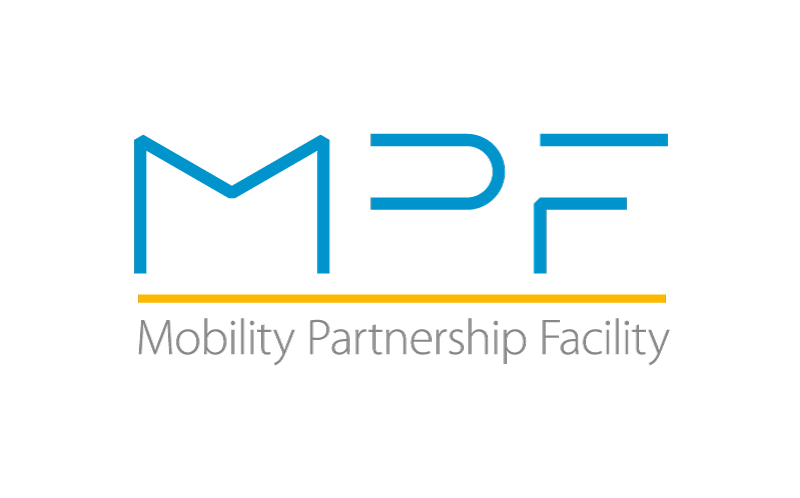One of the innovative tools proposed by the EU’s New Pact on Migration and Asylum (published on 23 September 2020) is the Talent Partnerships conceived as a single framework aiming to “offer cooperation with partner countries and help boost mutually-beneficial international mobility”.
ICMPD today launches a series of blog articles on how the Talent Partnerships could be shaped, put in motion and brought to fruition by sharing experience, research findings and practices.
In this first article, Oleg Chirita and Diana Stefanescu reflect on the lessons learnt from the implementation of several Pilot Projects on Legal Migration, within the framework of ICMPD’s
Mobility Partnership Facility (MPF), funded by the European Commission, Directorate General Migration and Home Affairs (DG HOME).
From policy intentions…
The Migration Pact signals that the EU’s population is ageing and shrinking, a phenomenon that will put more pressure on a European labour market that is already experiencing skills shortages in sectors such as agriculture, ICT, health or medical care. Moreover, the global COVID-19 pandemic has brought to surface a series of labour market challenges and needs that are expected to exacerbate and deepen in the years to come. Prior to the COVID-19 outbreak, the estimations were indicating that across Europe the labour supply was growing by about 0.3%, whereas the labour demand was increasing by circa 1% per annum.
The European Skills Agenda for sustainable competitiveness, social fairness and resilience, released in the midst of the pandemic, calls for a paradigm shift on skills across the EU, given their significance in driving the socio-economic transition, recovery from the COVID-19 effects and competitiveness. As such, the Agenda acknowledges the need to improve the legal pathways into the EU, enhance skills matching, establish clearer procedures and recognise the competences of migrants. This should be done in partnership with partner countries in order to promote both development and mobility through increased investments in skills.
…to pragmatic actions
In 2018, as a response to the EU Agenda on Migration, MPF was mandated by DG HOME to support a series of pilot projects aiming to test modalities of cooperation in the area of legal and labour migration between EU Member States and priority countries. To date, four pilot projects have been funded – coordinated by Belgium, France, Lithuania and Spain - focusing on North Africa and Nigeria. While the form and scope of mobility and targeted stakeholders differ from one project to another, all of them have sought to test different and innovative methodologies, addressing skills and labour market research, candidate search and selection, matching between candidates and employment or educational offers, and partnerships, as well as the organisation of placements and reintegration activities.
As a tried and tested, flexible and scalable mechanism with a track record in fostering cooperation on migration, the MPF is well placed to further accompany the EU in designing and implementing the Talent Partnerships through knowledge, research, networks, coordination and its operational ‘powerhouse’ that finances partnerships on legal/labour migration.
Learning from the first generation of the MPF-funded pilot projects
The MPF-funded Pilot Projects’ experience and emerging practices suggest that the upcoming Talent Partnerships would need to consider the following critical aspects:
- Enabling environments - many partner countries do not (yet) have the appropriate institutional and legal frameworks, contacts and infrastructure in place to implement and pilot fully-fledged mobility schemes with EU MS. In these cases, dedicated opportunities for research, preparation and incubation of pilot partnerships should be offered that could help create an enabling environment for the development and implementation of sustainable legal pathways. Initiatives could be bilateral or group countries according to defining characteristics or joint interests to best adapt to existing capacities and policy priorities.
- Bridging the gaps between the public and private sectors by engaging with their mandates, needs, motivations, expectations and interests. Private sector engagement remains a key aspect that makes or breaks the success of a Pilot Project. More structural engagement and exchange with relevant bodies (such as chambers of commerce, employers’ associations and others), and investment into trust building, are needed in both national and international contexts. Here, too, dedicated initiatives that allow for exchanges and opportunities to explore and incubate cooperation may be most effective to create an environment where stakeholders ‘dare’ to engage in mobility schemes at bilateral or regional levels.
- The matching of skills to the demands in both EU and partner country labour markets remain complex and challenging. Competencies often formally lie with public employment services which have insufficient capacities. A mixed approach, based on timely research on skills, making the most of the breadth of available technological tools, should be encouraged to help systematise approaches.
- There remain untapped opportunities to find inspiration and generate learning beyond the usual suspects in the private and public sectors. Less visible actors such as private recruitment agencies, offer the potential to gain insight into practices across sectors and countries, to continue to develop missing links and reach economies of scale. Dedicated research could shed light on these practices and results could feed into the policy and practice of mobility initiatives.
- A dedicated monitoring and evaluation framework for mobility initiatives with specific and measurable qualitative objectives and indicators is indispensable to foster learning, and demonstrate the impact and added value of the talent partnerships – looking beyond mere numbers of mobility beneficiaries as a measurement of success. This would help highlight the important functions of Pilot Projects as relationship builders and system diagnostic tools that can help overcome policy and legislative challenges on both sides.
More information about the lessons learnt of the MPF actions may be found in this Policy Brief.
Paving the ground for the Talent Partnerships
The Talent Partnerships represent a tremendous potential cooperation instrument between the EU and its key partner countries, yet their conceptualisation would need to be predicated on the following dimensions:
- Inclusive and multi-stakeholder partnerships with tailored-made mobility schemes
The only way to achieve meaningful outcomes and impact is to involve a wide range of institutions, actors, networks and stakeholders in partnerships. The Pact makes clear reference to several actors, yet the modalities to bring them into the process are still to be defined. The most suitable skills and mobility schemes, that take into consideration these actors’ potential, capacities and interests, are yet to be designed and eventually tested out.
In this respect, skills mobility schemes with circular movements and additional practical elements of support (internships, vocational training, mentoring, business development, entrepreneurship, diaspora engagement, apprenticeship) can help leverage more positive effects in both countries of origin and destination. Nevertheless, simplicity of design is often key to ensuring that pilot initiatives can be scaled up, replicated and transformed into permanent legal pathways that can be sustained without public funding. Careful and further experimentation will be needed to offer partners the options and balance that best fit their respective context, capacities and purpose.
Dedicated accompaniment by experts and facilitators that can help mediate interests, support incubation of partnerships and guide design and set-up of initiatives may be worth considering to boost cooperation and increase effectiveness.
- Enabling ecosystems, robust and coherent multi-stakeholder governance
The success of the Talent Partnerships will be contingent upon the institutional capacities, policy and legislative frameworks, administrative practices, institutional infrastructure, and overall migration governance structures in the key countries and EU Member States. The more advanced and well-structured the conducive environments and the cooperation frameworks are, the smoother the facilitation and implementation of talent partnerships could be.
Suitable enabling ecosystems, which incorporate a wide spectrum of constituents, policy areas and dimensions, are essential to pave the ground for increased communication, collaboration, engagement and cooperation across the board or coherence between institutions, sectors and policies. They also facilitate relevant processes and stages (e.g. skills intelligence, matching, pre-departure, visa, mobility, integration, upskilling/reskilling, return and reintegration, etc.), build common understanding, as well as enable the management of expectations and interests.
Coordination of all interventions in countries of origin, in EU Member States and in Brussels should be strengthened to ensure strategic engagement with partner countries across policy or project boundaries. Governance structures within projects or at local level should be used to ensure and make the most of multi-stakeholder dialogue and participation. Any enabling environment will need to benefit from tailor-made, peer-to-peer capacity development and technical assistance measures.
EU financing mechanisms for labour migration could be also be strategically used to link to other available funding from external sources (such as from the private sector or philanthropy) to leverage a maximum of resources contributing towards the improvement of the frameworks for cooperation.
- Better local contextualisation and ownership in partner countries
The selected regions - the EU’s Neighbourhood, the Western Balkans, and Africa - have been long promoting legal pathways with the EU (including within the Mobility Partnerships framework), hence their engagement in the upcoming Talent Partnerships is expected to be unproblematic. Apart from understanding the opportunities and challenges of their institutional environments, it will be salient to further understand their development, labour market and migration priorities and other needs with due consideration to avoiding brain drain, investing in their human resources capital and strengthening their enabling systems (e.g. vocational education training, emigration procedures, etc.).
In turn, this should build more confidence between partners, facilitate the implementation of partnerships and, very importantly, ensure full ownership of the partner countries throughout the entire lifetime of partnerships. Partner countries should be given a strong voice as far as their priorities, coordination and engagement modalities are concerned. Ownership is also key when it comes to ensuring flexibility and adaptability of partnerships, based on research, labour market developments, the dynamics in the private sector, and monitoring and evaluation.
Therefore, the creation or consolidation of formal settings for the purpose of coordination with a wider range of entities in the area of labour migration should be favoured. Deliberate and strategic engagement has already proved to be effective in fostering the ownership of different stakeholders in broader consultative contexts (such as for Mobility Partnerships) in the recent past. Learnings from these processes can inform the set-up of new and more targeted platforms for engagement on skills and mobility.
The expansion of the initiatives on legal migration to new countries and regions is to be accompanied by a diversification of approaches concerning stakeholders and methodologies that are crucial to make the most of the new funding available, including by addressing low- and medium-level skills profiles. The value of the (skills) mobility initiatives as a tool to address the labour market needs and to facilitate more effective cooperation with partner countries may need to be balanced against the number and sustainability of those who move within it.

